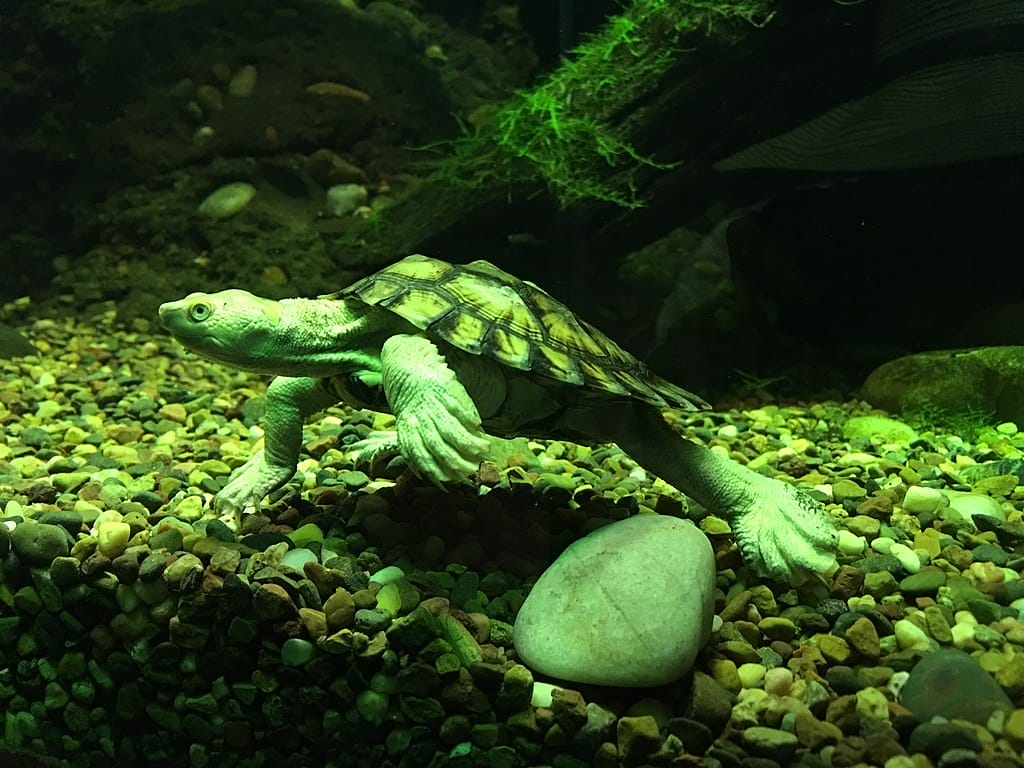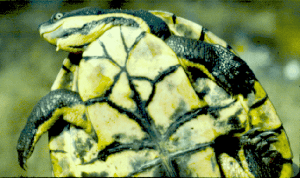Myuchelys georgesi (Bellinger River Snapping Turtle)
Home > Turtle Database > Myuchelys georgesi (Bellinger River Snapping Turtle)

Myuchelys georgesi, commonly known as the Bellinger River Snapping Turtle, is a rare freshwater species found only in a small stretch of the Bellinger River in New South Wales, Australia. This species is known for its unique head shape and was driven to the brink of extinction due to a deadly virus outbreak.
Native To These Regions
New South Wales (Australia)Native Turtle Species Map – Find Turtles by Region
Scientific Classification
Kingdom: Animalia
Phylum: Chordata
Class: Reptilia
Order: Testudines
Family: Chelidae
Genus: Myuchelys
Species: Myuchelys georgesi
Common Names
Bellinger River Snapping Turtle
This Hilarious Turtle Book Might Know Your Pet Better Than You Do
Let’s be real—most turtle care guides feel like reading a textbook written by a sleep-deprived zookeeper.
This one’s not that.
Told from the snarky point of view of a grumpy, judgmental turtle, 21 Turtle Truths You’ll Never Read in a Care Guide is packed with sarcasm, sass, and surprisingly useful insights.
And hey—you don’t have to commit to the whole thing just yet.
Grab 2 free truths from the ebook and get a taste of what your turtle really thinks about your setup, your food choices, and that weird plastic palm tree.
It’s funny, it’s honest, and if you’ve ever owned a turtle who glares at you like you’re the problem—you’ll feel seen.
Identification
Description
The Bellinger River Snapping Turtle has a distinctive head shape with large eyes and a slightly hooked beak. Its carapace is smooth and oval, usually brown or olive, with a lighter-colored plastron. The limbs are strong, with webbed feet suited for swimming.
Sexual Dimorphism
Females are larger than males, with wider and more domed shells. Males have longer, thicker tails and a more concave plastron to aid in mating.
Check more turtles from the Myuchelys genus
Native Origin and Distribution
Geographical Range
This species is endemic to a small stretch of the Bellinger River in New South Wales, Australia. Its extremely restricted range makes it highly vulnerable to environmental changes and diseases.
Preferred Habitat
The Bellinger River Snapping Turtle prefers clear, slow-moving freshwater habitats with sandy or rocky riverbeds. It thrives in areas with abundant submerged vegetation and ample basking spots.
Behavior
Feeding Habits
It is an omnivore, feeding on aquatic plants, insects, crustaceans, and mollusks. Its powerful jaws help it crush shells and tough plant material.
Predators
Juveniles are vulnerable to predation by birds, fish, and invasive species like foxes. Adult turtles have fewer natural predators but can be affected by habitat destruction.
Reproduction
Breeding Season
Nesting typically occurs during the warmer months, with peak activity between late spring and early summer.
Reproductive Method
Females lay clutches of eggs in sandy riverbanks, where they incubate for several months. Hatchlings emerge when temperatures are favorable, making their way to the water.
Conservation
Extinction Status
Data Deficient
Threats
The species suffered a catastrophic decline in 2015 due to an unknown virus, which wiped out a significant portion of the population. Other threats include habitat degradation, water pollution, invasive predators, and climate change.
Conservation Measures
Conservation efforts include breeding programs, habitat restoration, and strict monitoring of the remaining wild population. A captive breeding program has been established to help repopulate the river.
Economic Importance
This species has no direct economic value but holds significant ecological importance. It plays a role in maintaining the health of aquatic ecosystems by controlling invertebrate populations and promoting plant growth.
Interesting Facts
- The species was only described in 1994, making it a relatively recent discovery in the scientific community.
- It is one of the most range-restricted freshwater turtles in the world.
- The mysterious 2015 virus outbreak nearly wiped out the wild population, prompting emergency conservation actions.
- Unlike many snapping turtles, it is not particularly aggressive and relies more on its hard shell for defense.

About Author
Muntaseer Rahman started keeping pet turtles back in 2013. He also owns the largest Turtle & Tortoise Facebook community in Bangladesh. These days he is mostly active on Facebook.














